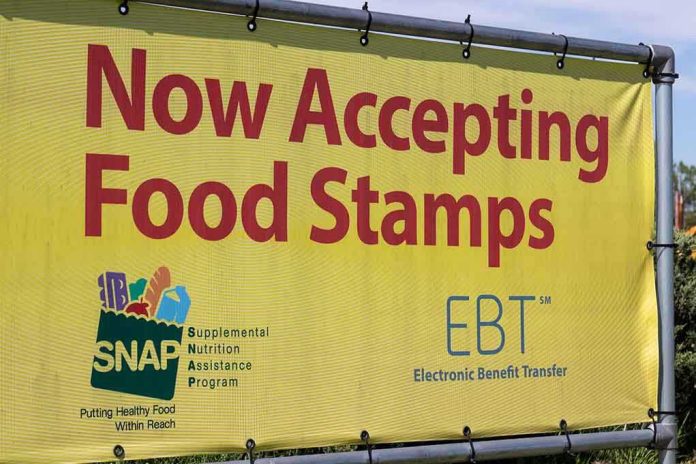
Forty-two million Americans face the terrifying prospect of losing their lifeline to basic nutrition as political gridlock threatens to drain food stamp funding within months.
Story Overview
- SNAP program funding projected to run dry in November without intervention
- 42 million Americans currently depend on food stamps for basic nutrition
- Government shutdown creating cascading funding crisis across federal programs
- Trump administration holds key to preventing widespread food insecurity
The Ticking Clock on America’s Food Safety Net
The Supplemental Nutrition Assistance Program faces an unprecedented funding crisis that could leave millions of families scrambling for their next meal. SNAP, which provides crucial food assistance to low-income households across America, operates on federal funding that requires consistent appropriations to maintain operations. The current political standoff has created a domino effect, threatening programs that millions of Americans rely on daily for survival.
Political Standoff Creates Real-World Consequences
Government shutdowns often feel abstract to many Americans, but this crisis demonstrates how political maneuvering translates into empty dinner tables. The 42 million Americans who depend on SNAP include working families, elderly citizens, and children who have no backup plan when government assistance disappears. These aren’t statistics on a spreadsheet – they represent neighbors, coworkers, and community members who face impossible choices between rent and groceries.
The November deadline creates urgency that political leaders can no longer ignore. Unlike other government programs that might experience delays or reduced services, food assistance represents an immediate need that families cannot postpone or substitute.
The Trump Administration’s Critical Decision Point
President Trump’s administration holds the power to prevent this crisis through executive action or by working with Congress to resolve the shutdown. The decision carries significant political weight, as cutting food assistance to millions of Americans would create visible hardship in communities nationwide. Rural areas, which strongly supported Trump in recent elections, could face disproportionate impact as SNAP recipients in these regions often lack alternative food assistance options.
SNAP could run out of funding by November if government shutdown doesn't end, leaving millions vulnerable https://t.co/rWIz6yb1v8
— FOX61 (@FOX61News) October 21, 2025
The administration must weigh fiscal conservatism against the immediate humanitarian crisis that would unfold if food stamps disappear. Conservative principles support self-reliance and limited government, but they also emphasize protecting the most vulnerable members of society during genuine emergencies.
Broader Implications of Federal Program Funding Gaps
The SNAP crisis illustrates a larger problem with using government shutdowns as political leverage. When essential services face funding interruptions, the consequences extend far beyond Washington politics. Food assistance programs represent a critical safety net that prevents widespread hunger and malnutrition, particularly among children whose development depends on consistent nutrition.
Other federal programs face similar threats as the shutdown continues, but few carry the immediate human impact of food assistance. The ripple effects extend to grocery stores, farmers, and food distributors who depend on SNAP spending to maintain their businesses, creating economic consequences that reach well beyond direct recipients.
Sources:
Will SNAP benefits be paid in November?













